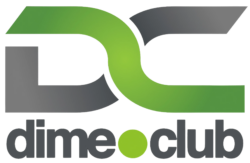
Search Engine Optimization (SEO) is a vital aspect of website development, helping websites gain visibility and traffic from search engines. However, improving SEO is not an easy task and requires constant effort and attention. In this article, we will discuss some high-quality tips on improving SEO for websites.
- Conduct Keyword Research
Keyword research is an essential first step in any SEO strategy. It involves finding the right keywords and phrases that people are searching for related to your business, products or services. Use keyword research tools like Google Keyword Planner or Ahrefs to identify relevant and high-traffic keywords. Once you have a list of keywords, create content that targets those keywords, including in your meta titles, descriptions, and throughout your website.
2. Optimize Your Website
Optimizing your website for search engines is crucial in improving your SEO. Make sure your website is fast and mobile-friendly as these are important ranking factors for search engines. Optimize your website’s structure, including internal linking and using a sitemap to make it easier for search engines to crawl and index your website. Additionally, optimize your website’s images by compressing them and using relevant alt tags.
3. Create High-Quality Content
Creating high-quality and engaging content is key to improving your website’s SEO. Write content that is relevant, informative, and adds value to your audience. Use your targeted keywords throughout your content but avoid keyword stuffing, as this can negatively affect your SEO. Also, aim for longer-form content as research has shown that longer articles tend to rank higher in search engines.
4. Build Quality Backlinks
Backlinks are a crucial factor in SEO and can significantly improve your website’s ranking. Aim to build quality backlinks from reputable websites in your industry or niche. You can do this by guest posting, creating infographics or other types of content that other websites will want to link to, or by networking with other bloggers and website owners.
5. Utilize Social Media
Social media is an excellent way to improve your website’s SEO. Share your content on social media platforms like Facebook, Twitter, and LinkedIn to reach a wider audience and increase traffic to your website. Additionally, having a social media presence can also help with link building and brand awareness.
6. Monitor Your Analytics
Monitoring your website’s analytics is essential in improving your SEO. Analyze your website’s traffic, bounce rates, and conversion rates to see what’s working and what’s not. Use this information to make data-driven decisions on how to improve your website’s SEO and adjust your strategy accordingly.
7. Use Header Tags
Header tags (H1, H2, H3, etc.) help search engines understand the structure of your content and the hierarchy of information on your page. Use header tags to break up your content and make it more scannable for users.
8. Optimize Meta Titles and Descriptions
Meta titles and descriptions are essential elements that appear in search engine results pages (SERPs) and can impact click-through rates. Ensure your meta titles and descriptions accurately describe the content on your page and include your targeted keywords.
9. Use Schema Markup
Schema markup is a type of structured data that helps search engines better understand the content on your website. By using schema markup, you can provide additional information to search engines about your business, products, services, and more.
10. Improve Site Speed
Site speed is a critical ranking factor for search engines and impacts user experience. Optimize your website’s speed by compressing images, minifying code, and using a content delivery network (CDN).
11. Optimize for Local SEO
If your business has a physical location, optimizing for local SEO can help you appear in local search results. This includes creating a Google My Business listing, optimizing your website for local keywords, and building local citations.
12. Monitor Your Website’s Health
Regularly monitor your website’s health and fix any technical issues that may impact your SEO. This includes checking for broken links, fixing 404 errors, and ensuring your website is mobile-friendly.
Here’s a sample HTML code to optimize your SEO:
<!DOCTYPE html>
<html lang="en">
<head>
<meta charset="UTF-8">
<title>Example Page | Your Business Name</title>
<meta name="description" content="A brief description of the content on this page.">
<meta name="keywords" content="targeted, keywords, related to, your business, products or services">
<meta name="viewport" content="width=device-width, initial-scale=1.0">
<!-- Other meta tags or links to CSS files or JavaScript files -->
</head>
<body>
<header>
<h1>Your Business Name</h1>
<nav>
<!-- Navigation menu code -->
</nav>
</header>
<main>
<h2>Main Heading</h2>
<p>This is some content related to your targeted keywords.</p>
<h3>Subheading</h3>
<ul>
<li>List item related to your targeted keywords.</li>
<li>Another list item related to your targeted keywords.</li>
</ul>
</main>
<footer>
<p>Copyright © Your Business Name</p>
<address>
Your Business Name<br>
Your Address<br>
City, State ZIP<br>
Phone: XXX-XXX-XXXX<br>
Email: your@email.com
</address>
</footer>
</body>
</html>
In that example, we’ve included several important elements for SEO:
The tag includes the main keyword for the page and the name of the business.
The <meta name=”description”> tag includes a brief description of the content on the page and the targeted keywords.
The <meta name=”keywords”> tag includes a list of targeted keywords related to the business, products, or services.
The <h1> tag includes the name of the business, which is an important element for SEO.
The content includes header tags (<h2>, <h3>) and list tags (<ul>) to break up the content and make it more scannable for users and search engines.
The <footer> tag includes the name and address of the business, which is important for local SEO.
Remember, while HTML tags are important for SEO, they should be used to support high-quality content that provides value to your audience.
By following these tips, you can improve your website’s SEO and increase your chances of ranking higher in search engine results pages. Remember to prioritize creating high-quality content, building quality backlinks, and monitoring your analytics to stay ahead of the competition.
In conclusion, improving SEO is a complex and ongoing process. However, by implementing the tips above, you can improve your website’s visibility, traffic, and ultimately, its success. Remember to stay up to date with the latest SEO trends and best practices to ensure your website stays ahead of the competition.









